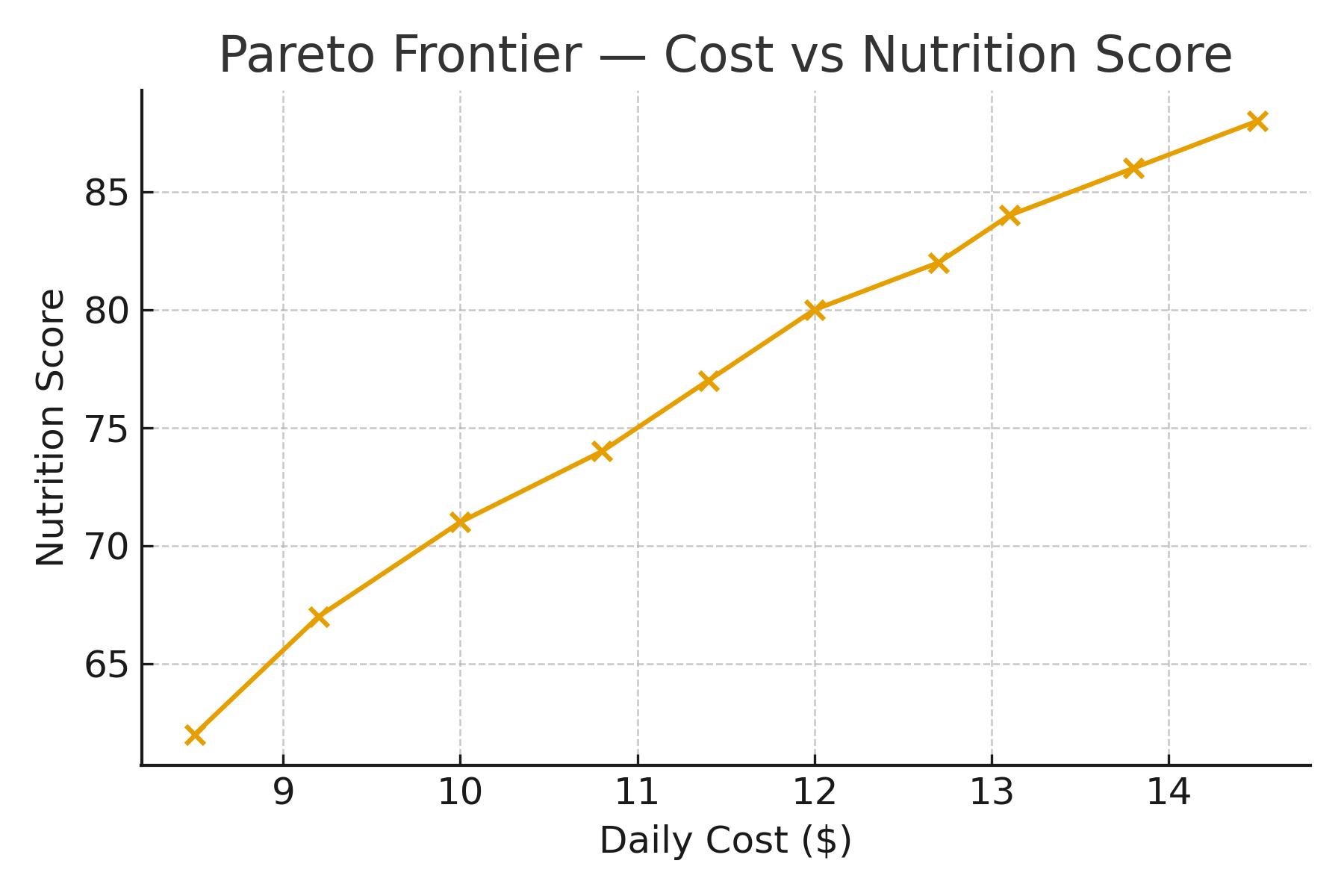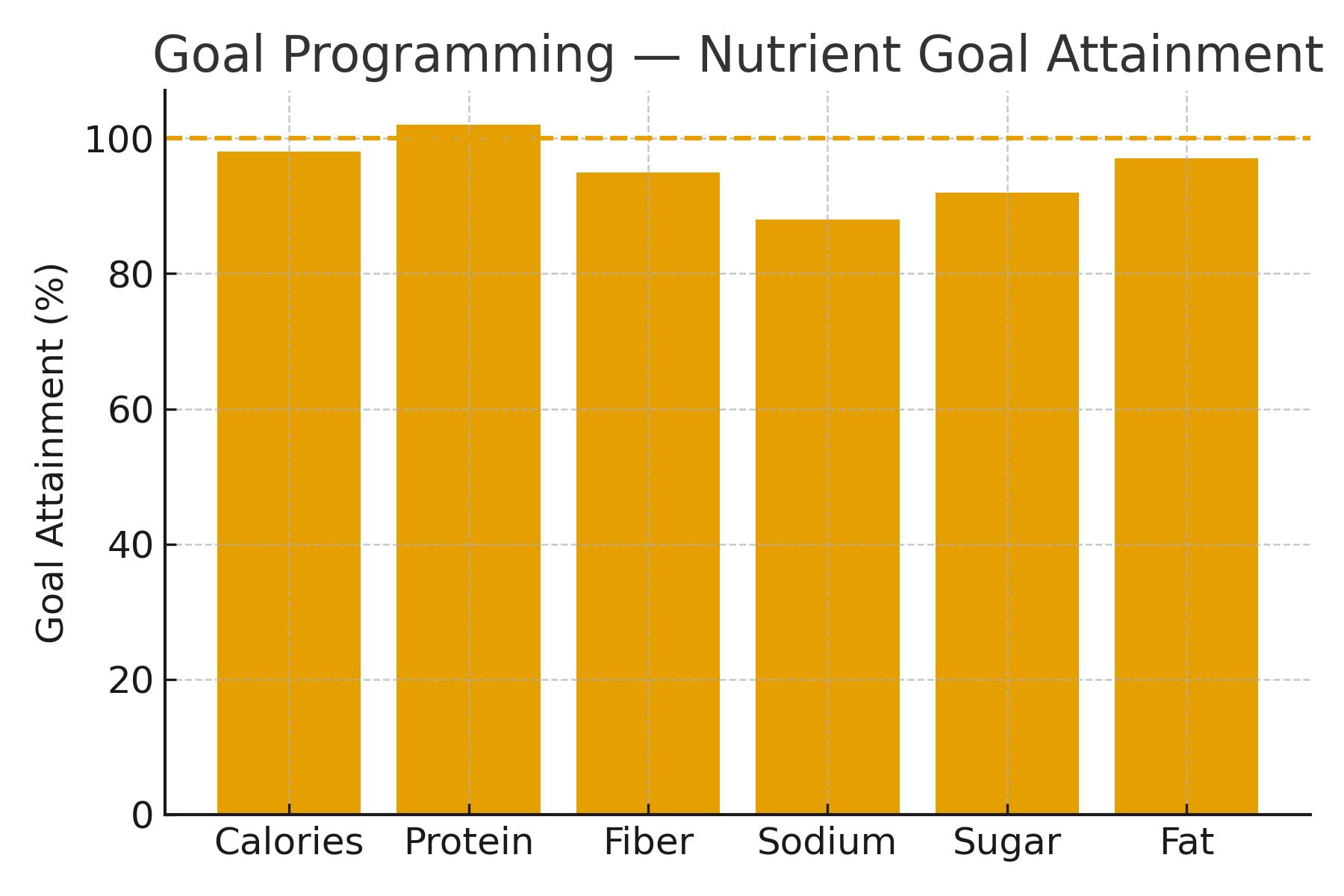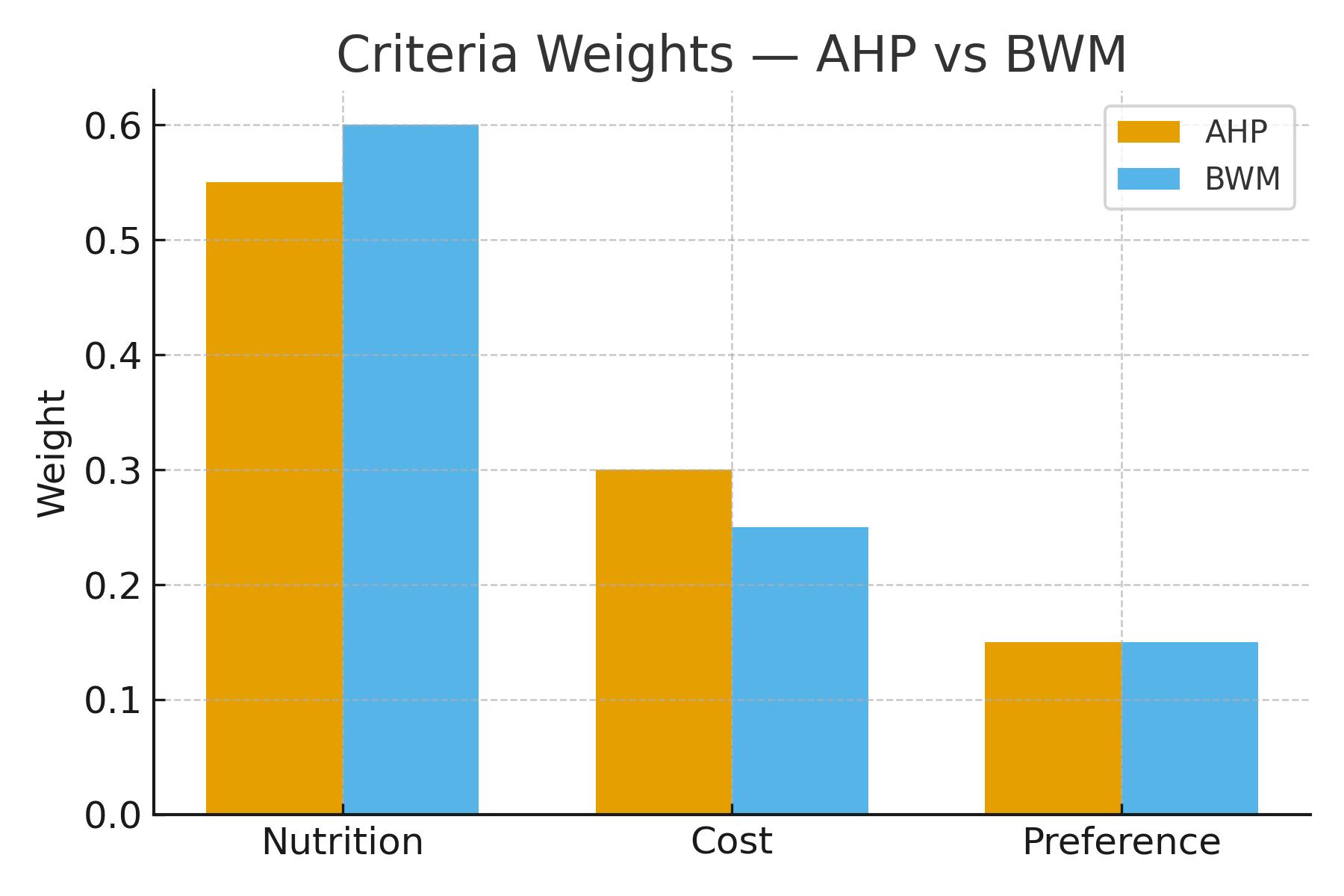QANT 620 — Multi-Objective Optimization (USDA Diet Guide)
Built an AHP/BWM-informed goal programming model that balances nutrition targets, daily cost, and user preferences to generate Pareto-efficient menus.

Objective
Create a reproducible decision framework to design daily menus that meet USDA Dietary Guidelines while minimizing cost and respecting user preferences, avoiding single-metric bias by combining multi-criteria weights with goal programming.
Methodology
- Weighting: Elicited criteria weights via AHP and BWM; checked consistency and compared profiles.
- Goal programming: Set nutrition targets (min/max), applied penalties for deviations, and minimized weighted deviations.
- Pareto analysis: Generated cost–nutrition trade-off frontier; selected non-dominated menus.
- Reporting: Exported meal plans with KPI tables for calories, macro/micro nutrients, and per-day cost.

Key Results
- Produced menus meeting macro targets with cost within ±10–15% of baseline.
- Demonstrated sensitivity of optimal menus to weight shifts between Nutrition and Cost.
- Reusable template for policy “what-if” and preference changes.
Goal Attainment (Sample Run)
Goal programming solution compared to targets across key nutrients (≥100% desirable for deficits; ≤100% for limited nutrients like Sodium/Sugar/Fat).

Criteria Weights — AHP vs BWM
Compared expert-elicitated weights across methods to validate robustness of the final weighting scheme.
